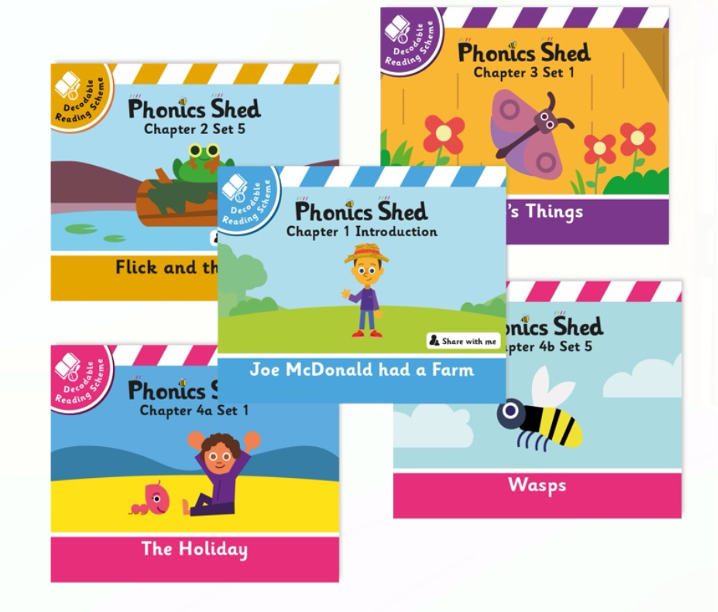The importance of stories
Schools who score highly in the Phonics Screening Check note that building a love of stories and reading plays a big part in their success (DfE, 2021).
2019 survey by the Literacy Trust found that children who enjoy reading were up to three times more likely to have higher than expected reading levels for their ages, and those who read daily are twice as likely to be above average in reading.
Since the 1960s, research has repeatedly shown that reading for pleasure is an indicator of reading ability. In fact, it was suggested in an international study that reading enjoyment and ability have more impact on children’s overall education than socio-economic factors.
Phonics Shed Decodable Reading Scheme
120 stage-specific decodable reading books that run alongside the scheme. These can be easily identified by their ‘Decodable Reading Scheme’ logos on the front cover and their chapter-specific colour coding.
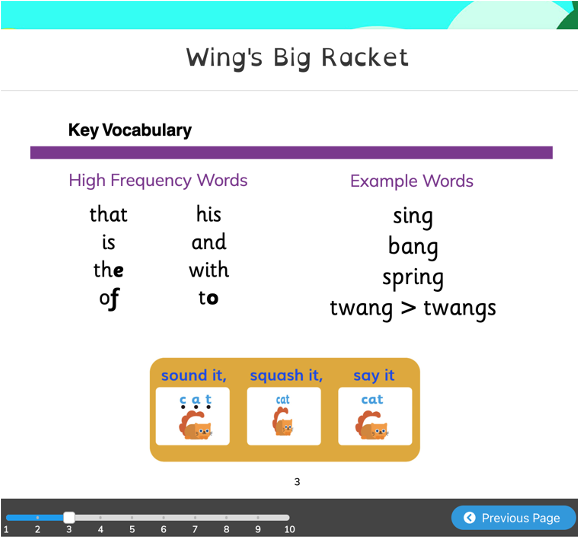
12 pages long with five pages of decodable text, followed by a ‘Questions About the Story’ page for adults and, from Chapter 2 onwards, ‘Key Vocabulary’ page for the children to use before reading the story. The volume of text on each page increases as the scheme progresses. In some of the texts there are colour-coded speech bubbles from Bumble – these are notes for adults and are non-decodable.
Practising with such decodable texts will help to make sure children experience success and effectively develop phonic strategies. This is in line with the DfEReading Framework (2021) and Ofsted Inspection Handbook (2021) which state that the sequence of reading books should show a cumulative progression in phonic knowledge that is matched closely to the school’s phonics programme.
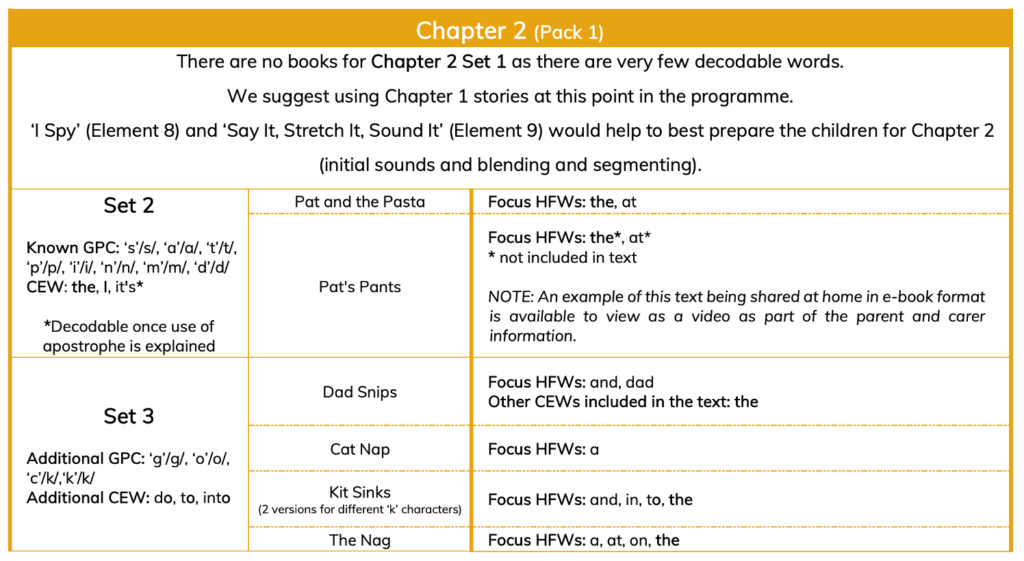
The twenty Chapter 1 books are pre-readers. These are stories that can be understood without needing text.
The Chapter 2 books begin at the end of Set 2, as there are very few decodable words available before then. They include two ‘Share with me, non-fiction’ stories in Set 5

Chapter 3 includes ‘Anna’s Bath’ which focuses on ‘a’ as /ar/, including regional variations.
Chapter 4a includes, among others, decodable books which focus on split digraphs. Chapter 4b contains two fully decodable non-fiction books
The Simple View of Reading

The Reading Framework: Teaching the Foundations of Literacy by the Department for Education (2021)
This can also be a good way to group children in their class and give you a focus to work on in reading groups.
Additional Comprehension Strategies
‘The 6 domains focus on the comprehension aspect of reading and not the mechanics: decoding, fluency, prosody etc. As such, VIPERS is not a reading scheme but rather a method of ensuring that teachers ask, and students are familiar with, a range of questions. They allow the teacher to track the type of questions asked and the children’s responses to these which allows for targeted questioning afterwards.’ (Literacy Shed)
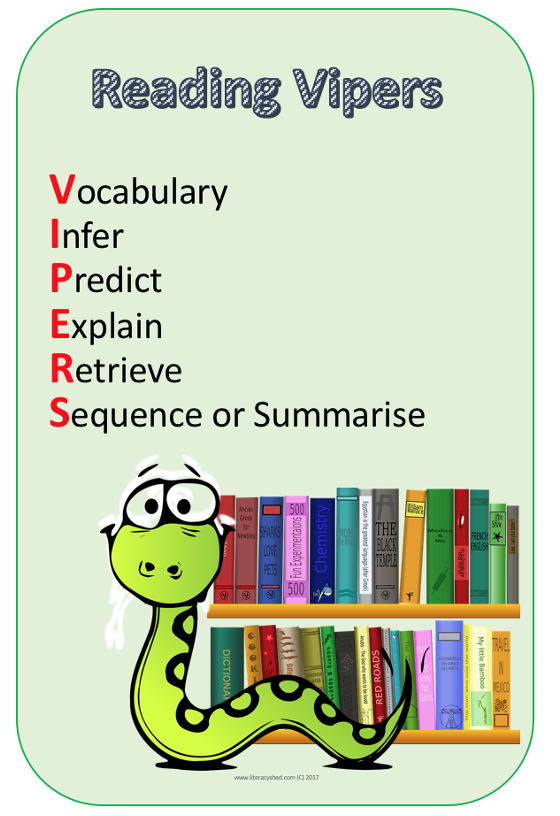






These are great resources to laminate and have with you, when reading with a pupil or group to ensure questioning is focussed.
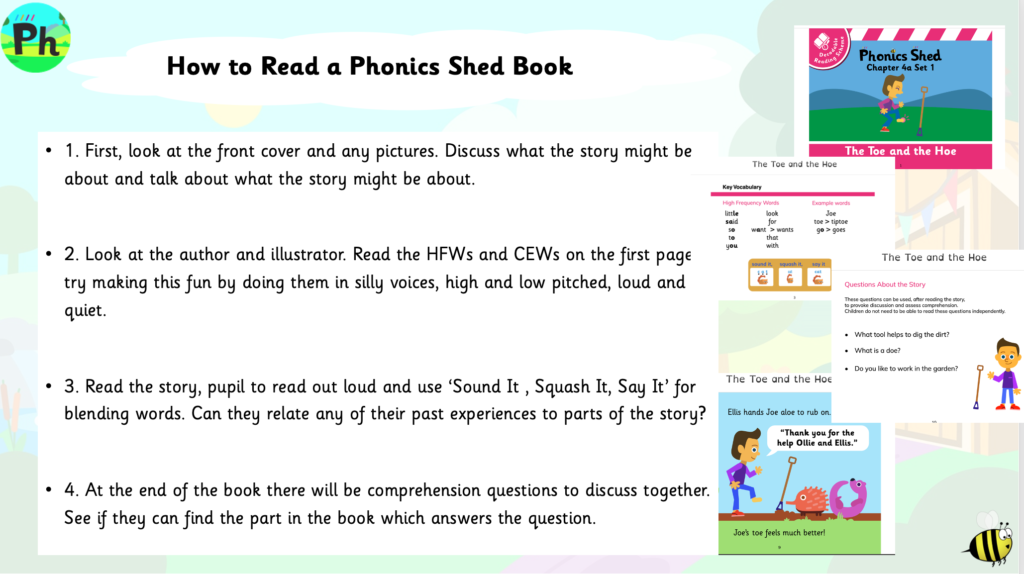
Other ideas for reading with a pupil or group
•Turn taking
•Reading together
•Going through and spotting certain GPCs
•Teaching pupils about how to look after books
•Naming parts of the book
•Reading to Joe the puppet
•Reading in a special place
Phonics Shed decodable readers – available online


Decodable books can also be assigned to the children in e-book format through the Phonics Shed Hub.
You may wish to assign e- books as a non-contact and paper free way of sending home reading. Alternatively, paper copies of the reading scheme can be purchased
Support for parents
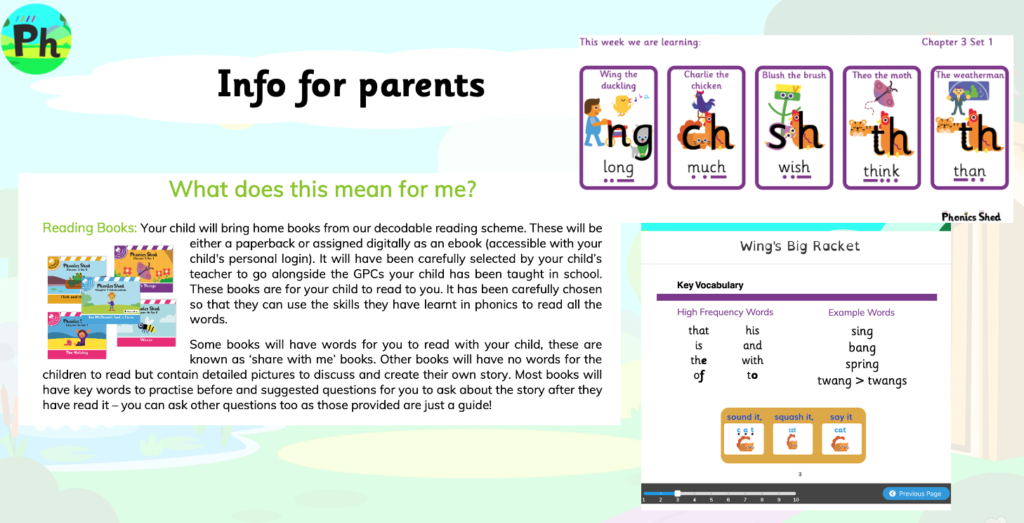
There are various resources for parents, including our leaflet explain what phonics is and how they can support their child at home. We also have ‘this week we are learning’ cards so parents are aware of the new characters and GPCs which their child is currently working on.
Making connections
These Phonics Shed character-based stories also cover many other important and relatable themes, such as emotions, social skills, mental health and self-care. This allows the children to identify with the characters and engage at a deeper level. They can also help children address their own thoughts and feelings by talking about the stories and the issues raised in them.
